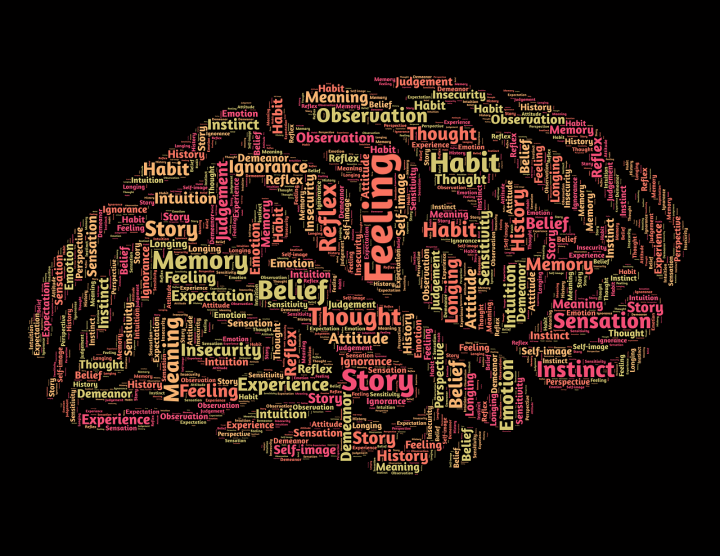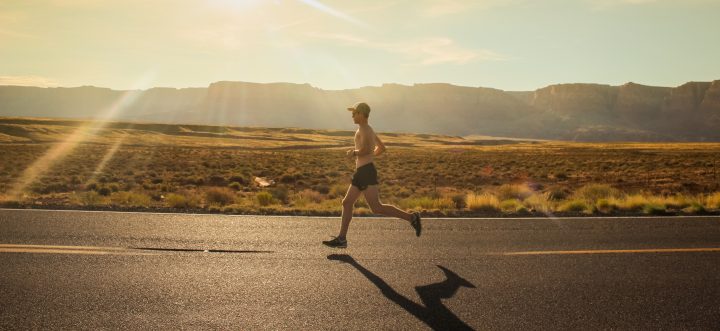
Have you ever done something where you felt as if everything clicked into place? You had razor sharp focus. Everything seemed effortless, and you felt like you could keep on going forever.
A runner will know the feeling. A cool breeze is blowing – the sounds of your shoes hitting the pavement fill your ears, you feel the rising and falling of your chest with each breath you take, your body settling into a rhythm to overcome the challenging distance and your mind already claiming success and crossing the finish line.

You constantly sort out multitudes of internal and external stimuli – pattern recognition for running form and future prediction of your pace – you start processing information on an unconscious level.

In this pandemic, many of the things in our life seem uncertain and out of our control. When these environmental forces come into play, certain setbacks may seem that our fate is determined by these external factors.
Having said that, consider times when instead of being directed by these external forces, you have felt that you have complete control of your actions – the master of your own destiny. The positive emotions accompanying these experiences and the satisfaction you receive invigorates the mind, body and spirit – so much, that it becomes a marker for how life can be.

This is what positive psychology calls an “optimal experience” or “flow state”. This is a state wherein you are lost in the moment, you are functioning at your fullest capacity – your attention is fixed firmly at the task in front of you. The experience itself is so enjoyable that people will participate for the sheer sake of doing it (Csikszentmihalyi, 1900).
If you are looking for ways to increase your wellbeing, creativity, productivity, performance and athletic potential, you might want to cultivate a state of flow – a concept that describes those moments of full immersion in a task that is adequately challenging but doable.
Mihaly Csikszentmihalyi, a positive psychologist, was the first to research and identify the state of flow. People across all classes, gender, age and culture have experienced flow – it is universal. If you’ve ever heard someone describe their performance of a task as being “in the zone”, they were likely experiencing a flow state.
How do we cultivate this state?
The next question – how do we cultivate this state? According to Csikzentmihalyi, these are the factors that accompany this experience.
1. Complete concentration on the task
2. Clarity of goals and reward in mind and immediate feedback
3. Transformation of time (speeding up/slowing down)
4. The experience is intrinsically rewarding
5. Effortlessness and ease
6. There is a balance between challenge and skills
7. Actions and awareness are merged, losing self conscious rumination
8. There is a feeling of control over the task
While many of these factors may be present, it is not necessary to experience all of them to achieve flow. Taking these factors into consideration…
How does one achieve a state of flow?
1. The challenge on hand and your skill level are equal.
A flow state is not achieved if there is a discrepancy between the level of challenge and the ease of completing a task. Is it achievable based on your current skill level? Is the task/goal challenging enough to motivate you? This means practice, practice, practice.
2. Have a clearly defined running goal.
To put it another way, have a target you want to attain – such as achieving SUB1 10KM run, and training specifically to attain that goal.
3. Unambiguous feedback.
As you perform the task, you are fully aware of your performance, and are fully involved with processing that feedback.
4. Intrinsic value of the activity.
You know the value of the task and its physical and mental benefits. You are aware of why you actually enjoy it.
Imagine for a moment that you are running in preparation for a race you haven’t run before. Your attention is focused on the movements of your body, the power of your muscles, the force of your lungs and the ground beneath your feet. You are living in the moment, utterly absorbed in the present activity. Time seems to fall away. You are tired, but you barely notice – and at the end of the run you’ve found you’ve hit a new personal record.
Although we can also attribute this to training and conditioning, the emotional depth of connection to the activity and the awareness of each action made grants a layer of complexity and concentration to the task – making it even more intrinsically rewarding, creating a positive cycle that provides clarity and control even during the most challenging moments. Thus, the cycle continues.
Reaching a flow state is not an accident – it entails hard work, dedication and focus.
The flow state is total immersion that requires skill. Too little skill for the challenge may lead to disenchantment, disillusion and chance for injury. Too great a skill for the challenge leads to boredom and stagnation. This applies not only to physical activity, but through all aspects of life.
As a final takeaway – flow is enjoyable. Research over the years has shown that the more often that athletes achieve flow, the happier they were. Not only that, but flow is shown to increase performance as well.
So, as you get back on the road for a run, or even any activity that you choose to bring into your life and excel at – consider all of these factors. Consider how it will make you happier and stronger. Think about what you want to achieve, and plan a way to do so. Evaluate each situation and movement start to middle, and congratulate yourself on a job well done at the end. And as you feel the flow, and know how to achieve it – you’ll be chasing those flow states even more.






